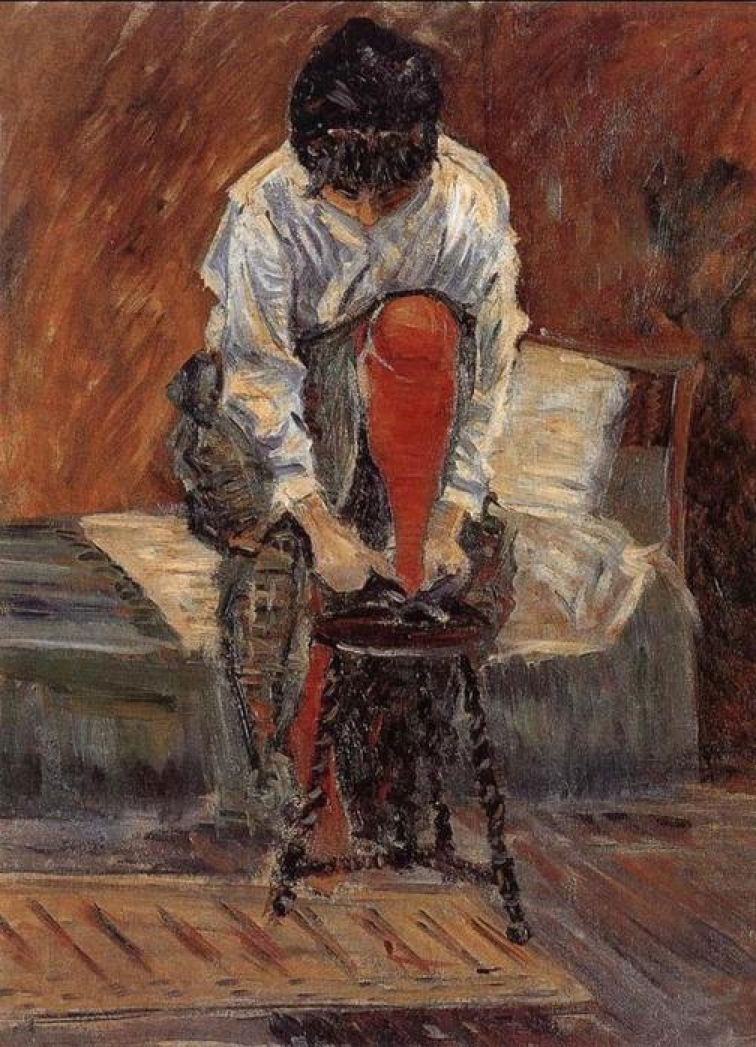This year I’m taking a long and deep look at the career and paintings of the French Neo-Impressionist Paul Signac (1863-1935). One of Georges Seurat’s closest friends, and an architect of Divisionism, it was he who took Seurat’s legacy into the twentieth century.
He was born in Paris on 11 November 1863, to a successful family of saddlers and harness-makers. If that sounds unimpressive now, at the time it was a busy and lucrative trade in cities like Paris, which were heavily dependent on horses for most transport, from cabs to delivery wagons. His family’s business was operated from two sites in the centre of the city.
When he was only six years old, Signac was sent to grandparents in the north of France for the duration of the Franco-Prussian War. Five years later, his family moved to Montmartre, which was already packed with artists’ studios, and came to influence the young Signac. At the age of 15 he attended the Fourth Impressionist Exhibition, where he admired paintings by Caillebotte, Cassatt, Degas, Monet, Pissarro and others.
On the death of his father in 1880, the family businesses were sold, and as his heir Paul Signac later received the proceeds as his inheritance. The family then moved out of Paris to one of its north-western suburbs, Asnières, downstream on the River Seine.
The turning point for Signac came with the Fifth Impressionist Exhibition a month after his father’s death. He was smitten by Impressionist paintings, and unsuccessfully advised his family to invest in them. His decision to be an artist was set by an exhibition of some of Monet’s paintings. By the autumn, he was painting outdoors on the banks of the River Seine, and paddling a single-seat canoe on the river. His first surviving painting dates from December 1881, and a couple of months after that he set up in his first shared studio.
During the summer of 1882, he started his practice of leaving Paris for the summer months, and travelling into the country or to the seaside to paint. That year, and again in 1883, he spent his time in Port-en-Bessin, on the coast of Normandy. During much of the rest of 1883, Signac was a student of Émile Blin (1823-97), an academic artist whose studio was in Montmartre.

Signac painted this view of the low cliffs at Port-en-Bessin in 1883, apparently during the period January to March. It shows clearly his early Impressionist style.

Le Bas rouge (Red silk stockings) (1883) is one of Signac’s few early figurative paintings. This shows his girlfriend Berthe Roblès, whom he had met the previous year. She worked as a milliner until 1889, and three years later she and Signac married.

Signac’s Road to Gennevilliers from 1883 shows one of the new industrial areas on the outskirts of Paris.

The Seine near Courbevoie is an oil sketch of the bank of the River Seine, which Signac painted in 1883.
In 1884, Signac joined a circle of literary Symbolists, including the influential critic Félix Fénéon (1861-1944). He started his own collection of paintings, buying several works by Paul Cézanne from Père Tanguy, who supplied many of the Impressionists with their art materials. Signac also began to cultivate collectors of his own paintings, and started his lifelong friendship with Claude Monet.
In May, he exhibited among the rejects from the official Salon which composed the Salon des Artistes Indépendents, where he first met Georges Seurat, Charles Angrand and Henri Edmond Cross. Together they formed the Société des Artistes Indépendents, the core of Neo-Impressionism. Seurat and Signac became close friends, just as Seurat had begun work on his masterpiece La Grande Jatte.

In the summer of 1884, Signac returned to paint Port-en-Bessin, Le Catel (1884), with its wonderful sculpted cumulus clouds.

His riverside views often show boats, and in the case of the Coal Crane, Clichy from 1884 one of the small industrial sites in the north-western suburbs of Paris.
In the Spring of 1885, Signac met Camille Pissarro in the studio of their mutual friend, the now-forgotten Impressionist Armand Guillaumin, following which Signac introduced Pissarro to Seurat, so setting up Pissarro’s Neo-Impressionist period.

Les Modistes (Two Milliners in the Rue du Caire, Paris) from 1885-86 shows his style just as he was making the transition to Seurat’s Divisionism. These two young milliners are busy making fashionable hats. His brushstrokes have shortened, but not yet become the dots characteristic of ‘pointillisme’. This is the first of his series of interiors, and the nearer of the two women, bent down retrieving her scissors, may have been Berthe Roblès.
In January-February 1886, Signac adopted Seurat’s ‘pointillist’ technique, and by March he was painting as a Neo-Impressionist.

While much of Signac’s view of Snow, Boulevard de Clichy, Paris, from January 1886, is white, he uses more vivid colours in Divisionist passages such as the wall of a house at the right. Rather than using the established complementary colours of red and green for his spots of paint, Signac here chooses red and blue, and blue and yellow (which are complementary).
Note on Opus numbers
These are given where known, and are sequential with time. They’re quoted from Cachin’s fine catalogue raisoné.
References
Cachin F (2000) Signac. Catalogue raisoné de l’Oeuvre Peint, Gallimard. ISBN 2 07 011597 6.
Ferretti-Bocquillon M et al (2001) Signac 1863-1935, Yale UP. ISBN 0 300 08860 4.
Ferretti-Bocquillon M et al. (2013) Signac, les Couleurs de l’Eau, Gallimard. ISBN 978 2 07 014106 7.

